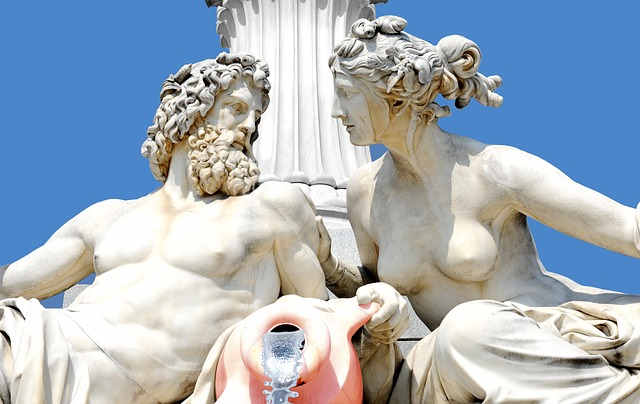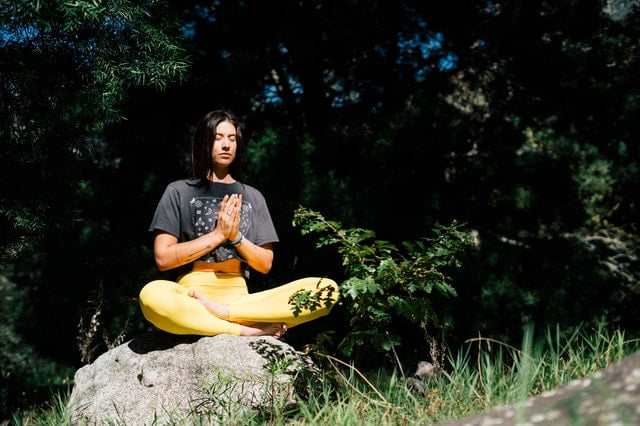Secular Atheist Spirituality without God or Religion
Atheist spirituality is not an oxymoron. In the video and article below, we’re going to cover some spiritual paths and practices that many secular Atheists adopt because they don’t require God or any religious belief.
You can learn how to find spirituality without God or religion. We’ll demystify spirit so that it is something that is simply practical and verifiable. You don’t have to think about it in supernatural terms.
Ready?
Let’s rock!
Let’s start with Buddhism and go from there to Atheist meditation techniques and more.
Buddhism is one of the more popular spiritual paths for Atheists in the west. There are many Buddhist lineages and paths. Some are devotional, but the most common paths in the west don’t require any religious belief at all.
Spirituality is About Knowing Things, Not Just Believing Things

Gautama Buddha once warned disciples not to believe in anything coming from any authority, or even from logical deduction, unless putting it into practice makes you happier, more compassionate, etc. It’s the experiential knowledge that is most important when it comes to spiritual matters.
When some people asked the Buddha about God, the soul, etc, he remained silent. Other times, he was cryptic or he dealt specifically with the needs of whoever was asking the question.
Whatever it is that these words might denote come from a deep experiential knowledge, and no language can do these things justice. His silence was likely his way of saying, “follow the eight-fold path and find the answer for yourself.” Talking about such things is often useless if you’re just working in a speculative state of mind.
Gautama Buddha was mainly concerned about direct experience with ever increasing depth. To him, belief was a hindrance to experiencing truth.
We won’t go into all the tenets of Buddhism here. There are plenty of resources available. However, one pillar of the eight-fold path is a pretty central one. That is meditation.
Meditation Can Be Religious or Secular
One of the more common meditation techniques taught in Buddhist centers in the west is a very Atheist-friendly one. The object of focus is on the breath. In some Theravada lineages, you watch the breath and become more intimate with it. When thoughts arise, you work with them using a process called mindfulness. Click here to learn how to practice mindfulness.
Some Buddhist traditions, including many Tibetan Vajrayana practices, are devotional or religious in nature. Instead of a secular meditation object, you are focusing on deities, either through visualization, mantra (a repeated word or phrase) or prayer.
This may turn off many Atheists, but even these have a practical component. In fact, they don’t require religious belief either. For many, it is yet another form of spirituality without God.
The Gods Are Archetypes Who Are Aspects of YOU

You can think of the deities as aspects of your self that are deep within you. For example, the goddess Blue Tara represents the dissolution and transmutation of anger. She helps one to uproot inner demons and obstacles to inner peace.
When invoking her, you are invoking a subtle place within yourself that is generally invisible and hard to access. She’s just a radio dial that helps you work with this invisible and very real part of yourself. In Atheist spirituality, you can think of this as a psychological tool for working with your subconscious mind.
You may be pleasantly surprised at how effective the above type of meditation can be, even for Atheists.
You may lovingly chant a mantra associated with Blue Tara, or you may lovingly visualize her. Love is the glue that binds the practitioner and the object of meditation.
OK, enough Buddhism.
What is Spirituality & How Can Atheists Embrace It?

What is spirituality? Perhaps a better question to start with is what is spirit?
Spirit is not something to believe in. It is not something that is supernatural. You can think of spirit as an experiential phenomenon. When experienced, it can be roughly described as a sense of deep stillness within.
My favorite metaphor is the ocean. The waves of the ocean are turbulent. They arise and then fall back again into the ocean. This is all happening on the surface. The ocean itself is deep and still.
Think of your thoughts, emotions and body sensations as waves happening on the surface of life. They are impermanent. They arise and fall away.
Behind all the thoughts and other processes happening within you is the deep still ocean. It is imperturbable. You can only disturb the surface of the ocean.
All valid spiritual paths provide ways to eventually experience yourself as the ocean. By default, we are generally used to experiencing ourselves as the impermanent waves.
In other words, all valid spiritual paths help us to develop equanimity. All of them teach, in one way or another, the art of letting go of all the grasping of the ego.
Religion is a Framework Providing a Language to Explain Experiences
The paths just have varying theological languages and emphases. For example, one may emphasize serving others and another devotion.
Calm observation of the processes happening within us, without clinging to experience or pushing it away, gradually allows us to experience the depths of oceanic consciousness. It allows the mind to settle.
The more we can experience life without all the attraction and repulsion, the more alive we become. Gradually, you can choose the attraction and repulsion without it choosing you. Spirituality is the art of becoming more alive. You can do this with or without God or religion.
Spirituality Means Evolving Your Brain
Let’s get less abstract and more scientific here. Neuroscience is a new and emerging field. Neuroscientists still have only a limited number of toys to play with, such as Functional MRI (Magnetic Resonance Imaging). They are, however, making a lot of progress in the study of spirituality and the brain.
One of the newer concepts in Neuroscience is neuroplasticity. Whenever you focus on something – playing a musical instrument, exercise, etc – you generate synapses that connect the neurons in the parts of the brain associated with the activity. This leads to a greater flow of communication between neurons.
Meditation, appreciation of beauty and other spiritual activities generate more synapses in various parts of the brain. With practice, the brain becomes more synchronized and connected as a whole. It becomes less a collection of specialized parts. Efficiency increases. Intuition increases.
Have you ever wondered what wholeness means? The process described above is one of the physical manifestations of wholeness. It is something that can be empirically verified by tests of the brains of monks, long term yogis and regular folks.
Meditation Evolves Your Brain
Let’s talk more about meditation. Meditation, even when it’s not called that, is at the heart of all spiritual traditions. There are secular, non-religious meditation techniques that Atheists can appreciate. There are also religious or devotional techniques.
The most important difference between meditation techniques is the object of focus. In most techniques, you are focusing on something.
It can be a repeated nonsense word or a line of a song. It can be a prayer to a saint or deity, a visualized image or the feeling of the breath as it enters and leaves the nostrils. Tai Chi is a movement meditation with a focus on feeling. After a while, you may feel things in Tai Chi that you never thought were possible to feel. There are tons of things you can focus on.
When thoughts or emotions come up, you either go back to the object (concentration meditation) or make peace with your thoughts and allow them to be what they are before returning to the object (mindfulness meditation).
If you don’t like religious meditation, find an object of focus that has nothing to do with religion or God. Very simple. Learn about the different types of meditation techniques by clicking here. There are tons of forms of meditation for atheists because the number of objects you can choose to focus on is virtually infinite.
By now you probably realize that Atheism and spirituality are not incompatible. Secular spirituality for Atheists is entirely possible and secular meditation techniques are very common.
Create Your Own Religion Without a Bearded White Guy Named God
Find something to practice that you truly resonate with and see where direct experience takes you. In this way, Atheist spirituality becomes an empirical science that is thoroughly testable over time.
I’d like to conclude with one of my favorite quotes from Ammachi: “God is pure experience.”
In this sense, there’s no floating bearded old white man in the sky hurling thunderbolts at infidels after all. She’s just reporting something she observed as a journalist rather than a preacher.
How does one verify her statement? Keep experiencing. You may find that it rings true. If not, don’t worry about believing it. It’s not important.
Share your experiences of Atheist spirituality without God in the comments below.

Tom Von Deck is a meditation trainer and speaker. Tom specializes in making meditation much much easier for busy and non-busy people from all backgrounds and paths. He is the Mackdaddy of The Deeper Meditation Video Zone and DeeperMeditation.net.

1 comment
Mike Brown
Hi, my name is Mike and I am currently working on a book called, ‘How to Debate Atheists
http://mikemanea.com/unapologetics/how-to-debate-atheists/